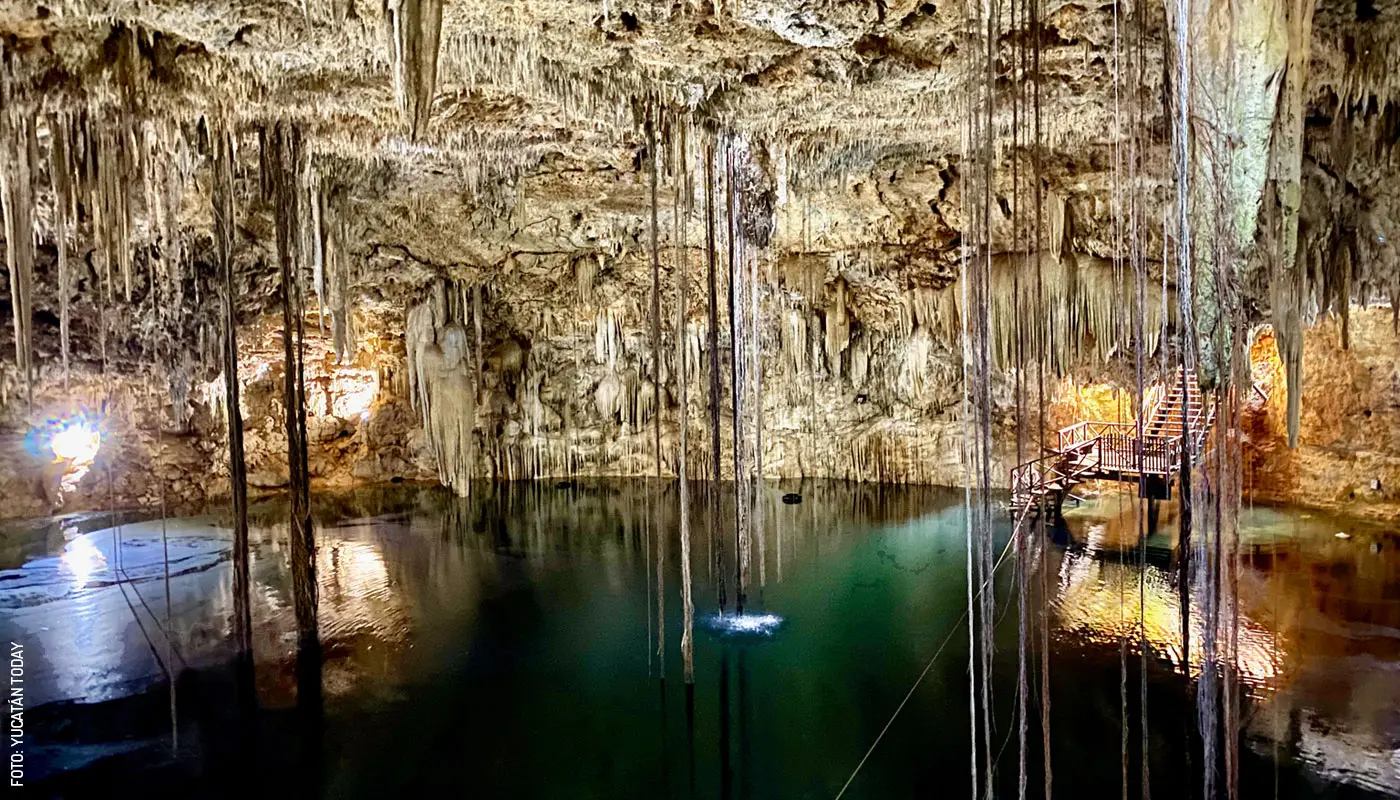La guía más completa para visitar un cenote en Yucatán
Una de las maravillas que encontramos en el estado de Yucatán son los cenotes. Los mayas les dieron el nombre de Dzonot, que los españoles pronunciaron cenote. Giraldo Díaz Alpuche (c. 1579) es el único encomendero que trató de explicar el significado Maya de la palabra de dzonot, que tradujo al castellano como “cosa honda”; el diccionario de Motul (un diccionario de jeroglíficos mayas) lo define como abismo y profundidad.
Antes de la Conquista, los cenotes no se usaban de forma recreativa. Para los mayas prehispánicos, los cenotes eran lugares sagrados, ya que, además de ser el único recurso para la obtención de agua fresca en la selva yucateca, representaban la entrada al inframundo.
En la actualidad, las cosas han cambiado un poco. Lo que podemos decirte con toda certeza es que, si visitas un cenote, la experiencia quedará grabada en tu mente por siempre; son mágicos, enigmáticos y únicos en el mundo.
¿Cómo se forman los cenotes?
La Península de Yucatán carece de ríos visibles, ya que su terreno es muy permeable. La misma agua que se filtra va disolviendo las rocas calizas del subsuelo, formando depósitos subterráneos de agua dulce. Cuando las bóvedas de estos depósitos se desploman o perforan es cuando podemos admirar un maravilloso paisaje de aguas subterráneas cristalinas y turquesa, que mantienen su temperatura de 24° C (75° F) todo el año.
Cada cenote es una obra de arte de la naturaleza, debido a las singulares formaciones de estalactitas, estalagmitas y columnas que se han formado a lo largo de millones de años.
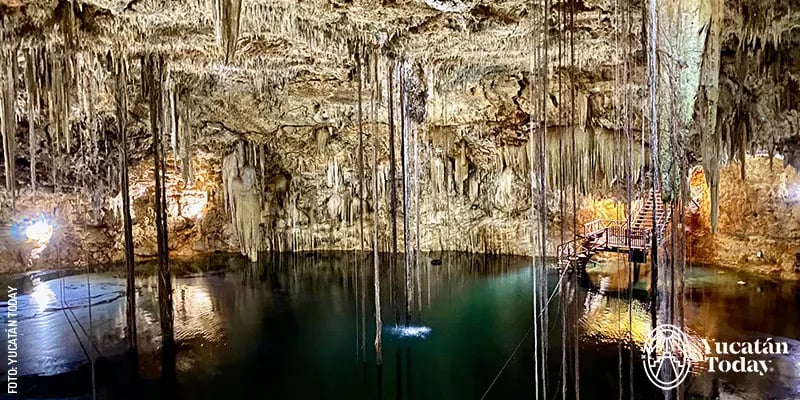
¿Cuántos cenotes hay en Yucatán?
La cantidad de cenotes es innumerable: se estima que existen más de 10,000, aunque sólo hay registrados 2,400. Es complicado poder ofrecerte un catálogo completo de los cenotes que puedes visitar durante tu estancia; la ventaja es que, no importa cuál (o cuáles) elijas, cada uno es una experiencia única.
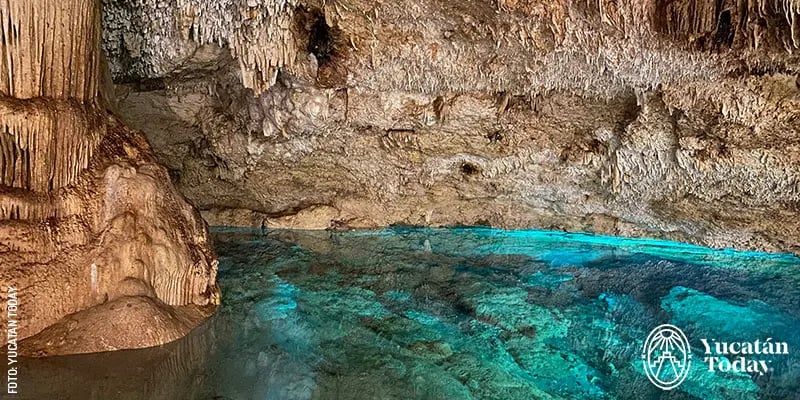
¿Cómo se clasifican los cenotes?
¿Sabes por qué existen los cenotes y cómo se formaron? Te lo contamos en este artículo.
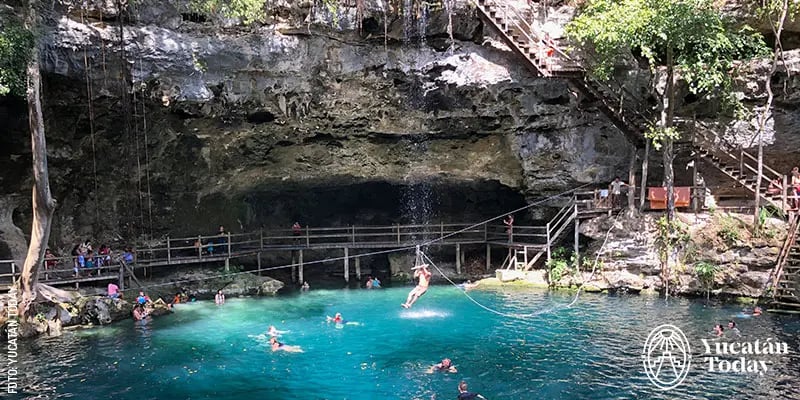
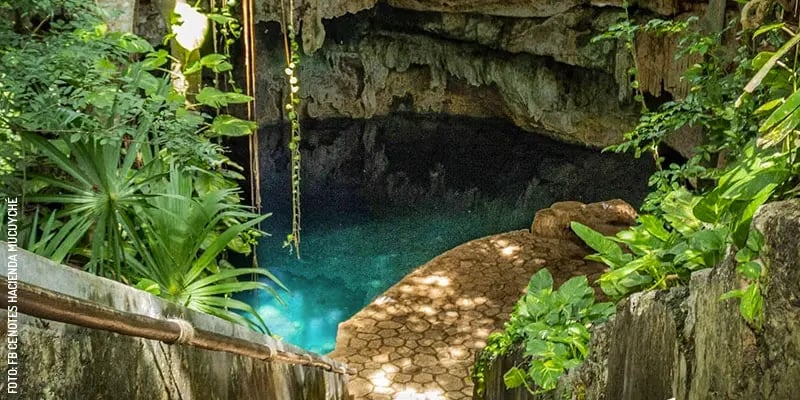
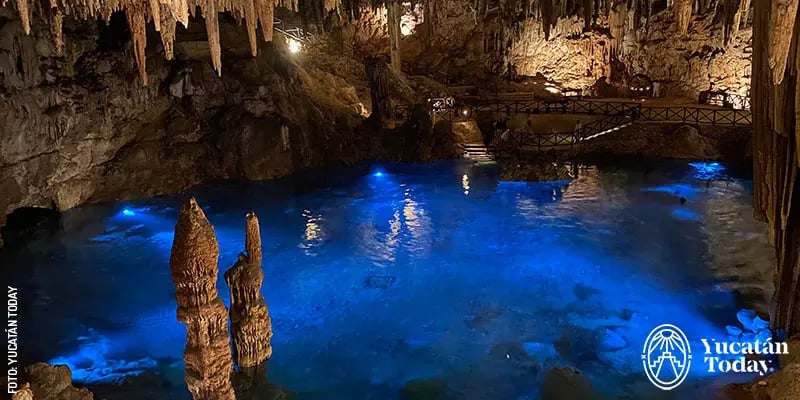
El significado de los cenotes
Para muchos visitantes (y no hay que negarlo, muchos locales también), los cenotes son albercas naturales: lugares divertidos para nadar y tomarse fotos; algunos insensatos incluso los han propuesto como lugares para hacer deportes acuáticos motorizados (¡!). Quienes han estudiado las diferentes funciones que las cuevas y los cenotes han tenido a lo largo de miles de años los ven con ojos muy distintos: las cuevas y los cenotes han sido refugios, fuentes de recursos y lugares sagrados. Si todos los visitantes a los cenotes comprendieran su valor (histórico, geológico, ecológico y cultural, por mencionar algunos), todos seríamos mucho más conscientes y respetuosos de su fragilidad y cuidado, y comprenderíamos que son una especie de museo viviente donde resulta que tenemos la opción de refrescarnos.
Esto no es desanimarte de conocer y zambullirte en los miles de cenotes que hay en Yucatán, ¡al contrario! Queremos que los conozcas, los disfrutes y los aprecies tanto como nosotros. Te compartimos una guía para visitar los cenotes de forma sustentable y respetuosa.
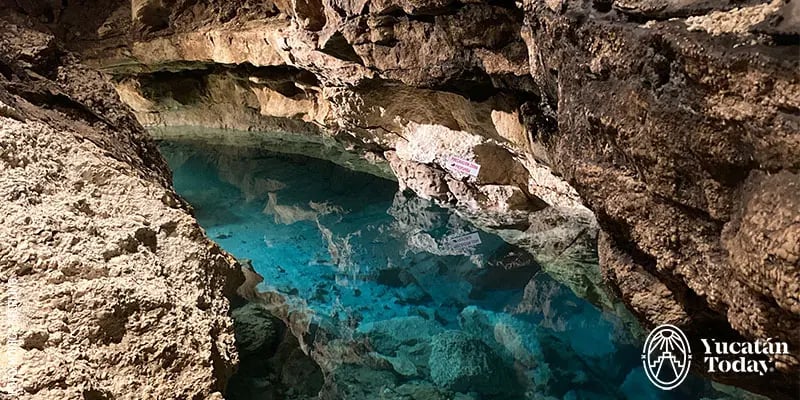
Cómo vivir la experiencia más auténtica en un cenote
¿Estoy visitando un cenote natural?
Cuando se trata de infraestructura en cenotes, menos es más. El modelo de algunos operadores de cenotes es destruir las formaciones naturales y luego construir un espacio artificial que evoca la naturaleza. No caigas en esa trampa.
¿Estoy beneficiando a la comunidad donde se encuentra este cenote?
Los cenotes son el patrimonio natural de los habitantes que los rodean; al visitarlos, ¿estás compartiendo ese patrimonio con ellos o los estás despojando de él?
¿Estoy consciente de que estoy disfrutando de un lugar sagrado?
Siempre pregúntate si tu visita está siendo respetuosa del entorno y su historia. Esto no significa que no puedas divertirte, pero te invitamos a hacerlo de forma responsable.
¿Estoy contribuyendo a la conservación de este cenote?
Los químicos que para nosotros son de uso diario (desodorante, bloqueador solar, repelente de insectos, productos para el cabello, etc.) son muy dañinos para el acuífero; siempre enjuágate bien antes de entrar al agua.
¡Ahora sí! No importa si vas a bucear, hacer apnea o sólo a remojar los pies: sumérgete, refréscate y disfruta los tesoros naturales que son los cenotes de Yucatán.
¿Qué llevar al visitar un cenote?
Por ley, es obligatorio el uso de chalecos salvavidas en todos los cenotes de Yucatán. Por lo mismo, la mayoría de los cenotes tienen chalecos salvavidas disponibles en préstamo o renta, usualmente en diversos tamaños. Sin embargo, si tú o tu familia tienen los suyos propios con los que estén cómodos, siempre será mejor llevarlos. Por otro lado, un visor o snórkel enriquecerá mucho tu visita, pues te permitirá ver las bases de algunas de las estalagmitas a tu alrededor. Una lámpara submarina podría ser útil ya sea para explorar o para darte una idea de la profundidad de los cenotes.
Si no estás acostumbrado a andar descalzo, o si te preocupa caminar sobre piedras resbalosas (con justa razón), usar zapatos para agua no es mala idea.
Lo que no puede faltar es, desde luego, tu traje de baño y, si lo deseas, un cambio de ropa. Un buen tip es llevar toallas de secado rápido o, aun mejor, las deportivas de nadador.
¿Quieres visitar un cenote con niños pequeños? Nuestro artículo Cenotes con niños: aventura y seguridad te ayuda a prepararte para que tu visita sea segura y divertida para toda la familia.
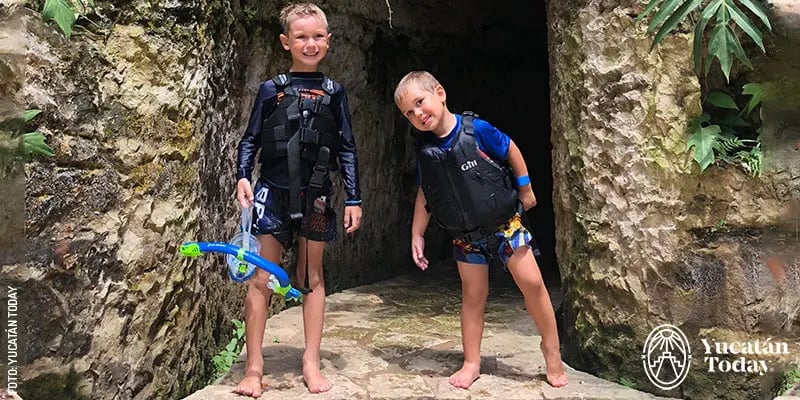
¿Cómo elegir qué cenote visitar en Yucatán?
Con literalmente miles de opciones para elegir, cada viajero tendrá su favorito según sus gustos, intereses y experiencia. Nuestra sugerencia siempre será visitar más de uno e ir observando cuáles son las características que son más importantes para ti: ¿prefieres los cenotes abiertos, semiabiertos o cerrados? ¿Rústicos o más intervenidos? ¿Turísticos o aventurosos? ¿Quieres que se encuentre cerca de otros atractivos o irás a donde sea únicamente para conocer un cenote específico? Como puedes ver, las combinaciones son infinitas.
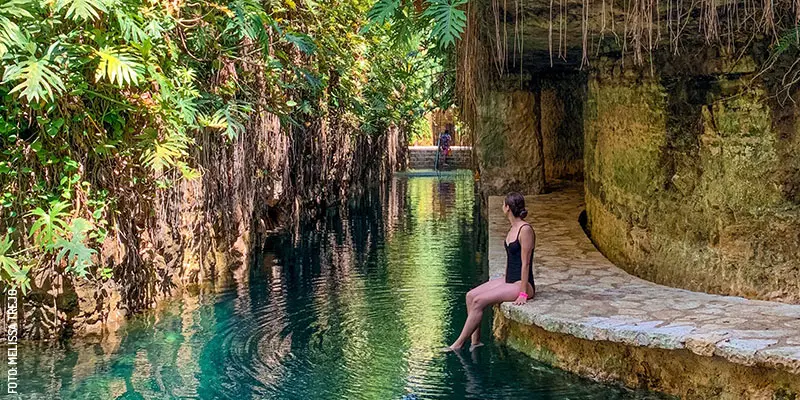
Algunos cenotes que puedes visitar en Yucatán
Cenotes en Cenotillo
Este pueblo debe su nombre a la gran cantidad de cenotes que existen tanto en el poblado como en sus alrededores. Según la gente de campo, existen más de 150 de ellos, muchos de los cuales están en pleno monte. Los principales son Kaipech, Xayín, Xoch, Yook Chac (magnífico cenote privado con grutas y ruinas mayas con excelente oportunidad para observar fauna) y Ucil (cenote del pueblo).
Guía: Juan Verde.
Tel. 9911 107 236 / 9911 063 637
Calle 13 #156 x 18 y 20, Cenotillo.
Si estás en Cenotillo, pregunta por él la plaza.
Ubicación: https://maps.app.goo.gl/ib57Xta2Yyi8Wmd2A
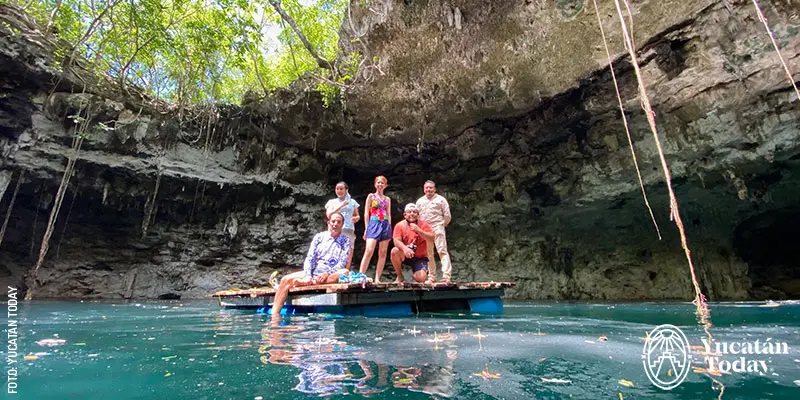
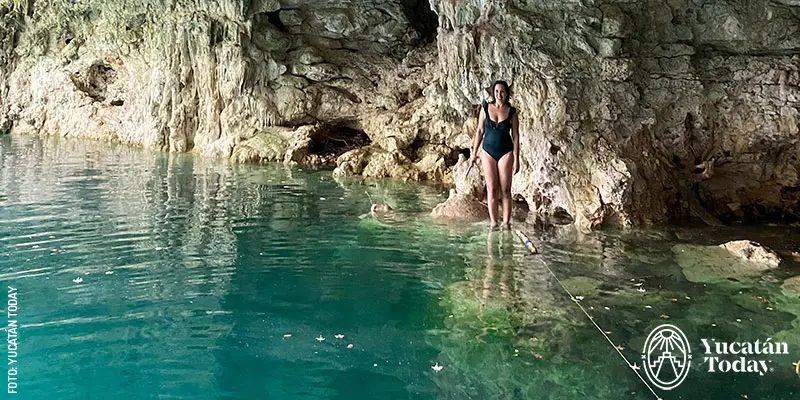
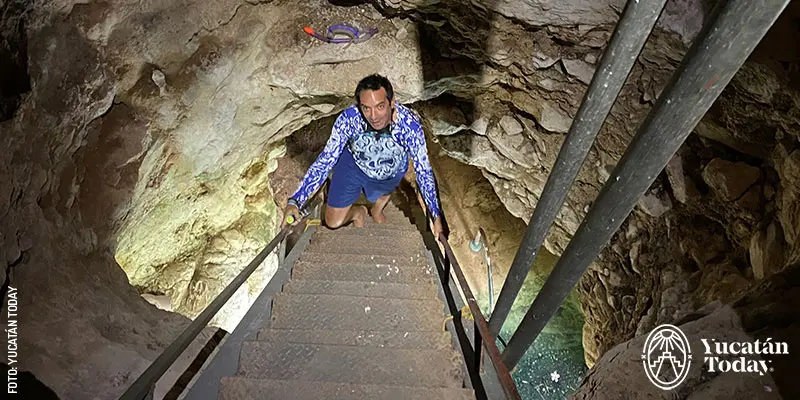
Cenote Chihuan
Este Cenote se encuentra en terreno particular y el dueño lo ha dejado muy cómodo para el nado y buceo con escaleras rústicas, una plataforma de concreto, iluminación, etc. El cenote tiene una profundidad máxima de 14 m (50 ft) y siempre tiene acceso directo a superficie. En el cenote apreciarás la belleza de sus formaciones de estalactitas, estalagmitas, y columnas a 3, 6, 9, 11 y 13 metros de profundidad. Para los buzos, se les hace un recorrido entre las formaciones, saliendo uno impresionado con lo que se ve. Su excelente ubicación en Holcá, comisaría de Kantunil, te permite disfrutar no sólo de la belleza natural de Yucatán, sino también de su patrimonio cultural ya que está en el corazón de la civilización maya a unos 30 minutos de Chichén Itzá y a una hora de Valladolid.
Cel. 988 957 0008
FB: Cenote Chihuan
Ubicación: https://maps.app.goo.gl/L4SNJqvYcXLtpZJ58
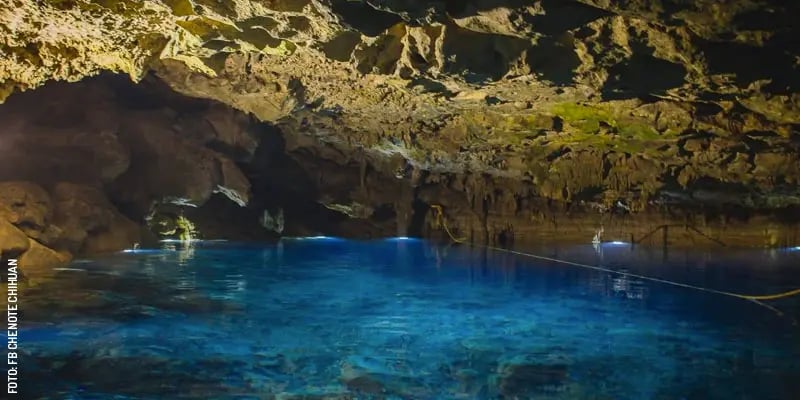
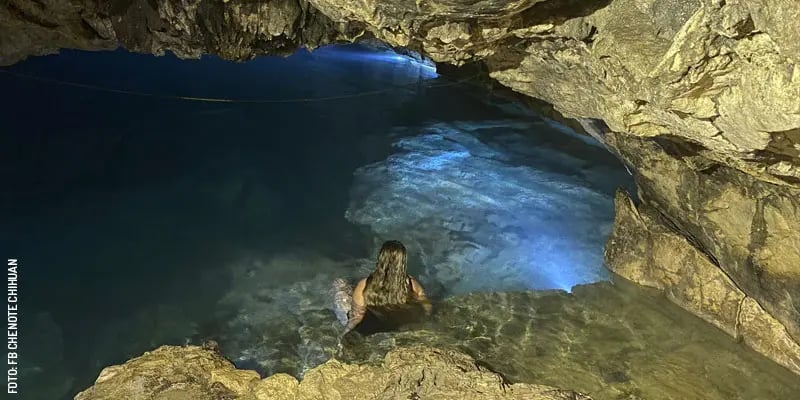
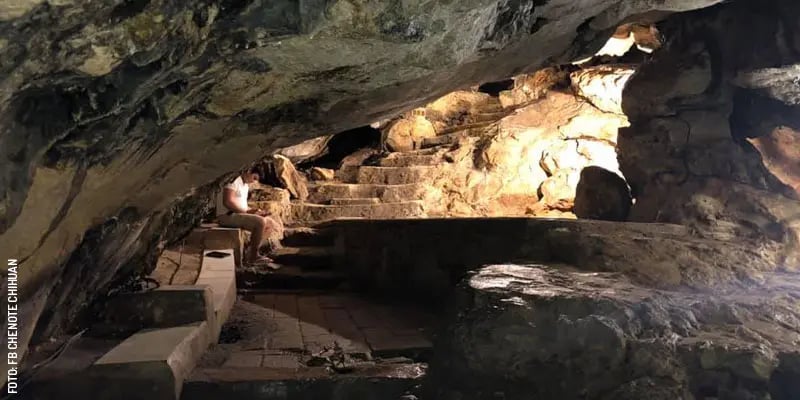
Cenote Choj Ha
También conocido como “Catedral de las Maravillas” este cenote cerrado se encuentra entre Chemax y X-Can. Está administrado por una cooperativa y no recibe demasiado turismo, por lo que es uno de los cenotes mejor conservados naturalmente que he visitado. Entrando por una escalera de piedra hecha a mano, bajas para apreciar una enorme bóveda de estalactitas y también te reciben las estalagmitas en la parte de abajo. Es un cenote grande lleno de formaciones que no ves normalmente en otros cenotes mas concurridos.
Ubicacion: https://maps.app.goo.gl/BouQUN3BjLFPcK3Q9
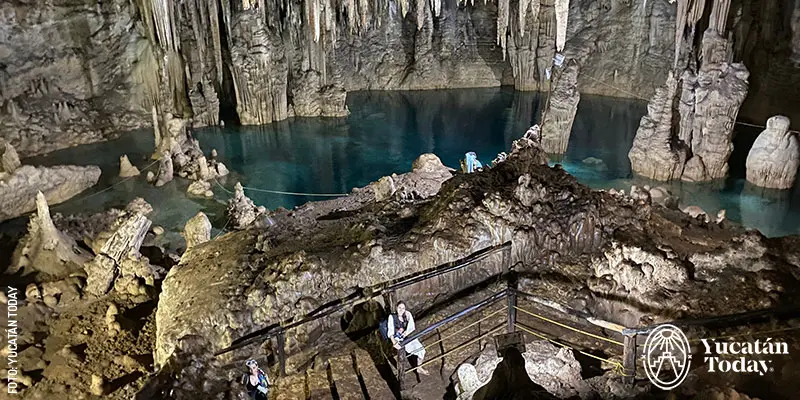
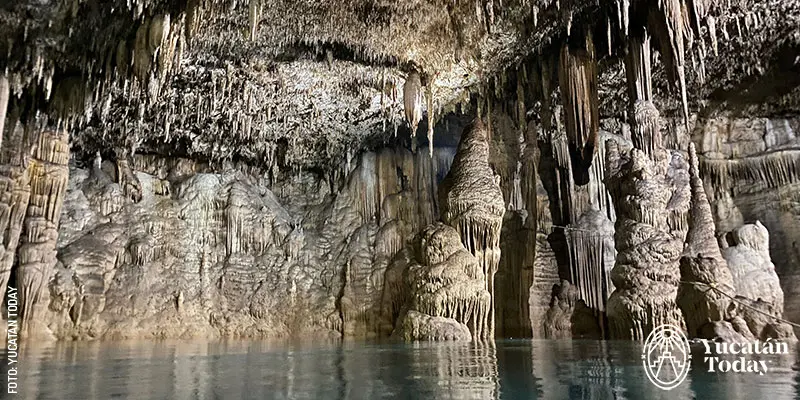
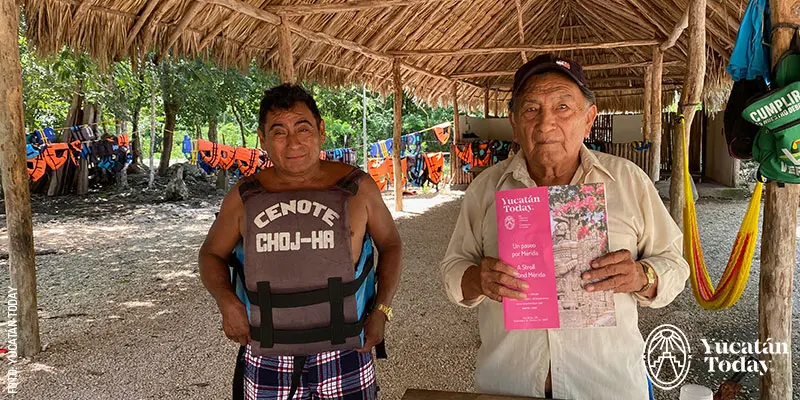
Cenotes en Cuzamá
Hay tres cooperativas que administran los cenotes del poblado de Cuzamá. Los cenotes Chelentún, Santa Cruz y Dzapakal son manejados por Grupo Organizado Chelentún, en Hacienda Chunkanán, a 3 km al sur de Cuzamá. Cooperativa “X’Tohil” maneja cuatro cenotes: San Felipe, Ayuso, Saak-Pakal e X’tohil. Los dos cenotes de Chansinic’che y Bolonchoojol están manejados por otro grupo. El medio de transporte en todos es un “truck” (carrito de madera tirado por caballos).
Cel. 999 502 9442
Ubicación: https://maps.app.goo.gl/NDB6G3KxWL8ek8AS8
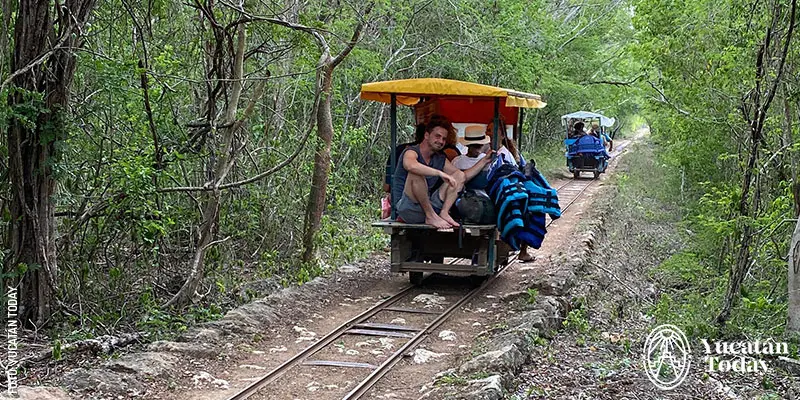
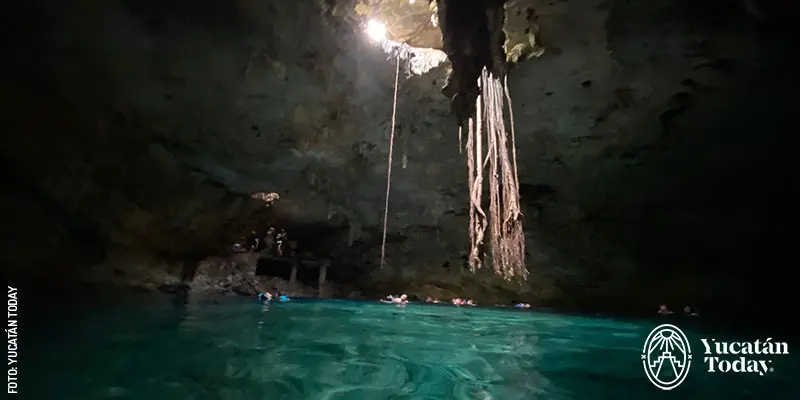
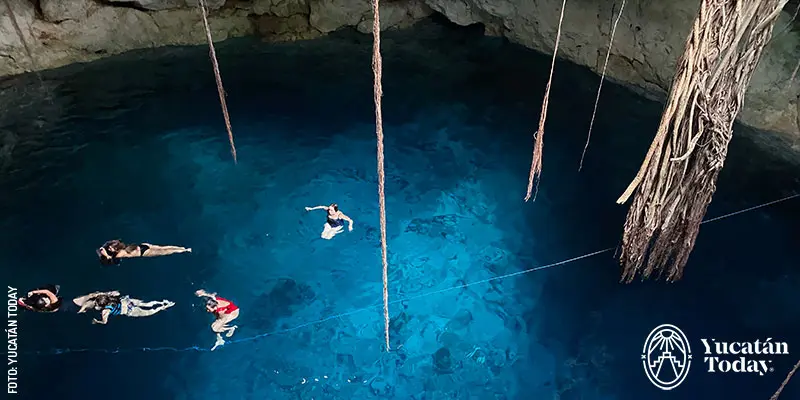
Cenote Dzul-ha
Este hermoso cenote se encuentra en la Hacienda Sotuta de Peón, y es una de las paradas que se hace en su recorrido por esta hacienda henequenera. Sotuta de Peón se encuentra 32 km al sur de Mérida; las visitas están disponibles todos los días, previa reservación.
Tel. 999 941 6441
Cel. 999 175 9923
www.haciendaviva.com
Ubicación: https://maps.app.goo.gl/ZFuaLCwvvWZXLHxQ8
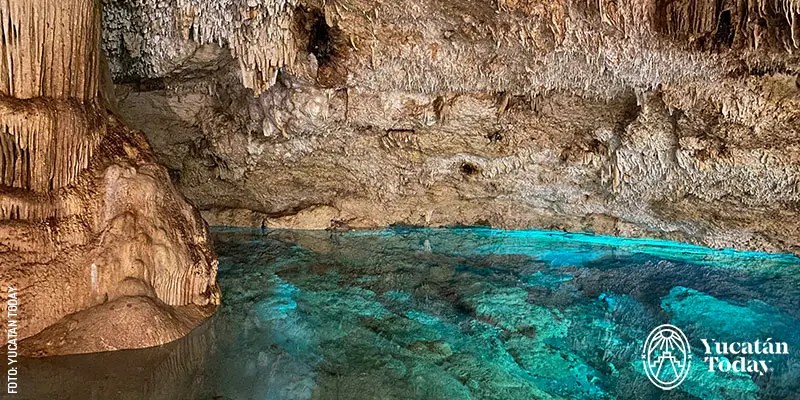
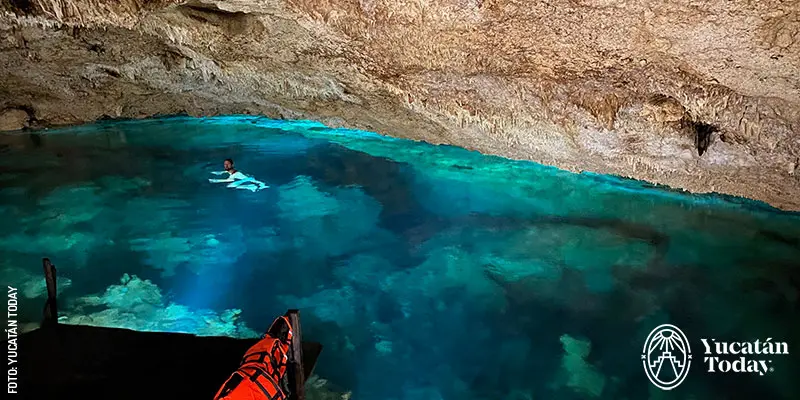
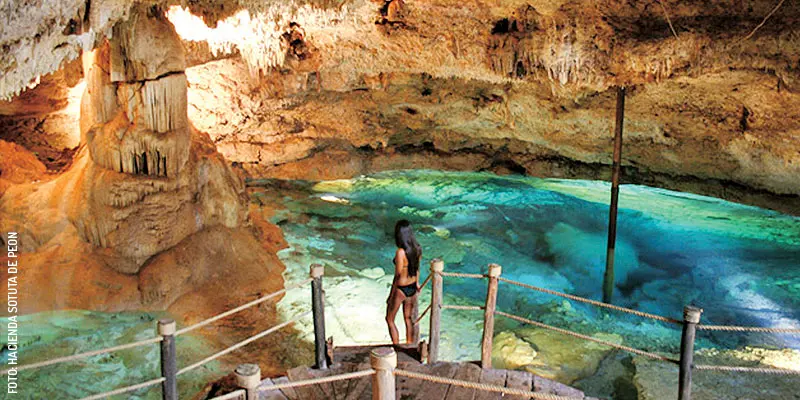
Cenotes Hacienda Mucuyché
Dentro de la ex hacienda henequenera ubicada en Mucuyché (“árbol de la tórtola”), al sur de la entidad, alberga el llamado Cenote Carlota, con un canal rodeado de vegetación; y el Cenote Azul, de tipo caverna con estalactitas aún formándose, dos maravillas que puedes visitar en Yucatán. Disponible unicamente bajo reservación, incluye recorrido histórico por la hacienda, recorrido en los cenotes, chaleco y equipo de snorkel, estacionamiento, restaurante, área de piscina, área de picnic, baños, regaderas y cambiadores, renta de lockers.
Cel. 999 547 6087
Ubicación: https://maps.app.goo.gl/32MuwTvDwk3S2jKaA
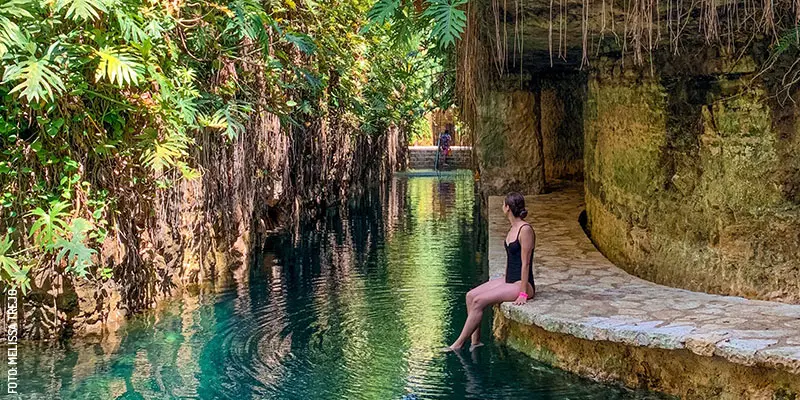
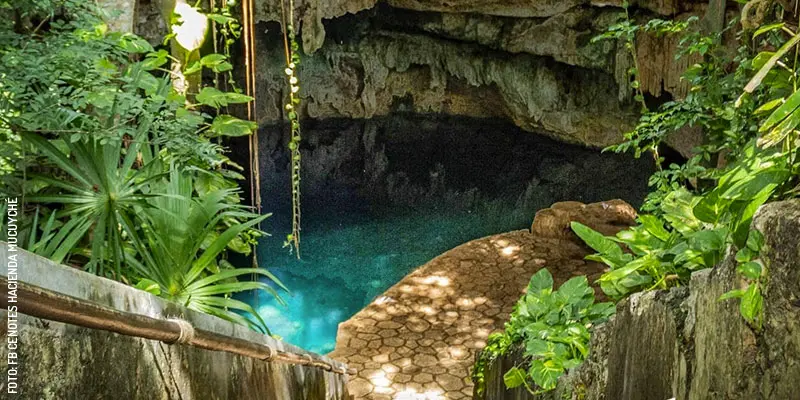
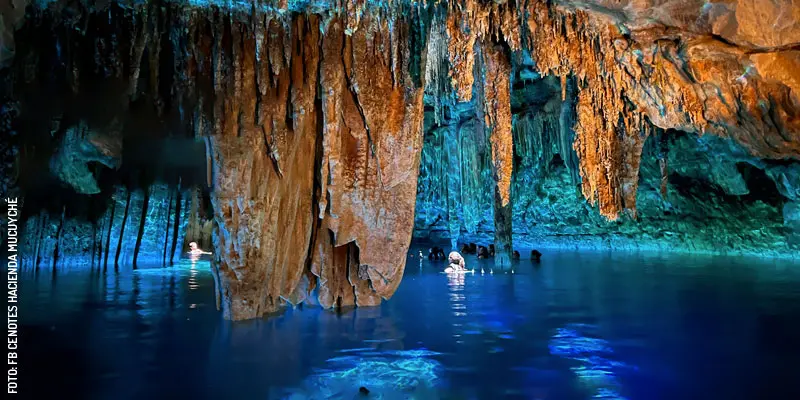
Cenotes en Homún
Homún es actualmente uno de los destinos más demandados para visitar cenotes en Yucatán, y no es sorpresa por qué: cuenta con aproximadamente 300 cenotes, de los cuales “únicamente” unos 30 están abiertos al público.
En Homún fácilmente encontrarás opciones de tours para visitar varios cenotes ya sea en buggy, cuatrimoto o mototaxi. La opción más común es, por mucho, el mototaxi. Primero que nada, son mucho más económicos ($300 pesos por persona, hasta 4 personas), pero además son muy convenientes porque no necesitas reservar: nada más te acerques al poblado al menos un mototaxista te ofrecerá un tour. Si eliges ir en buggy o cuatrimoto, el precio sube ($1,600 pesos por vehículo), pero sí ofrece mayor amortiguación y velocidad.
Los tours usualmente incluyen la visita a tres cenotes; tu guía normalmente los elegirá por ti, a menos que tú le pidas visitar alguno en particular.
¿Quieres planear tu visita a Homún? Consulta nuestra guía de cenotes de Homún.
Tour en Cuatrimoto o Buggy
Buggoz en Finca Oz
Tel. 999 802 3081
FB: Finca Oz
Ubicación: https://maps.app.goo.gl/stsm87VzdBabMU8LA
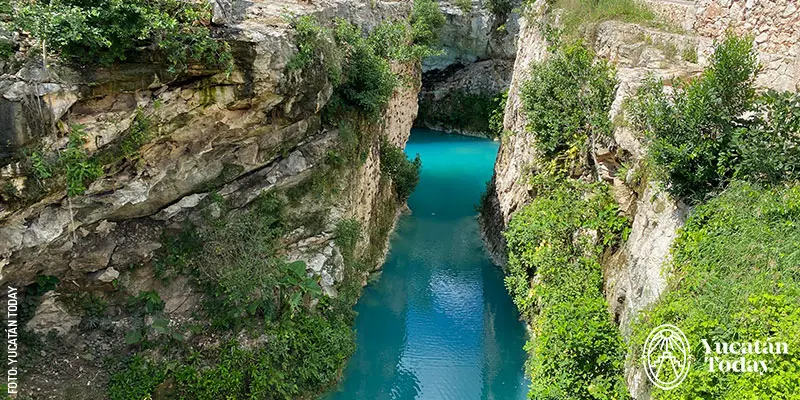
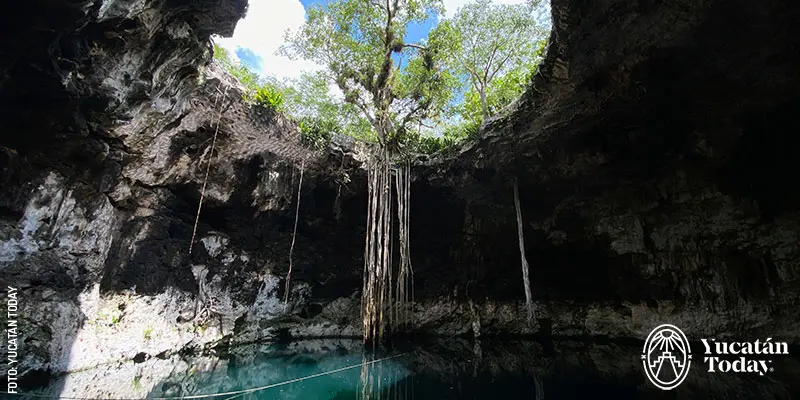
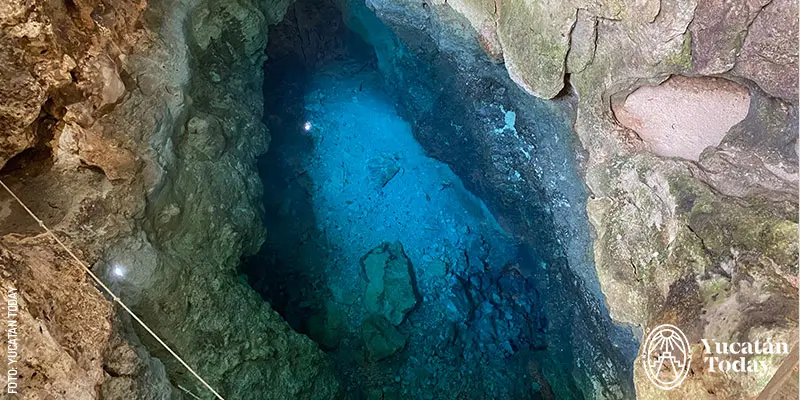
Cenote Ik-Kil
Por su cercanía a Chichén Itzá y Pisté, el cenote Ik-Kil es sin duda uno de los más visitados de Yucatán. Se trata de un cenote perfectamente redondo tipo pozo abierto, con vegetación exuberante y cascadas de agua, que se hizo famoso alrededor del mundo por ser la sede de la Serie Mundial de Clavados 2014 de Red Bull. Si no deseas lanzarte hacia él desde una altura de 27 m, también puedes bajar al agua por una gran escalinata. Hay un restaurante estilo buffet y bungalows para pasar la noche.
Tel. 985 851 0002 / 999 329 3654
FB: Cenote Ik kil Oficial
Ubicación: https://maps.app.goo.gl/9My9przsY3zQwB648
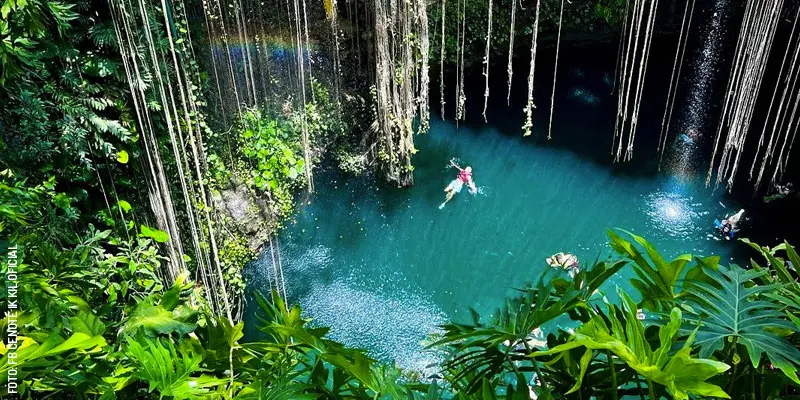
Cenote Kankirixché
El cenote de Kankirixche (árbol del fruto amarillo) cuenta con amplios y espectaculares galerías subacuáticas; sus aguas son cristalinas y de alta visibilidad. Es un sitio ideal para buceo o snorkel en aguas abiertas y de caverna. Su belleza interior es un gran atractivo para el visitante por su gran bóveda donde penden estalactitas y raíces de álamo. Es un cenote semi-abierto con una altura de 10 metros hasta llegar al cuerpo de agua, tiene aproximadamente 30 metros de largo y 25 de ancho.
Ubicación: https://maps.app.goo.gl/h5poA26j9hahQiBa8
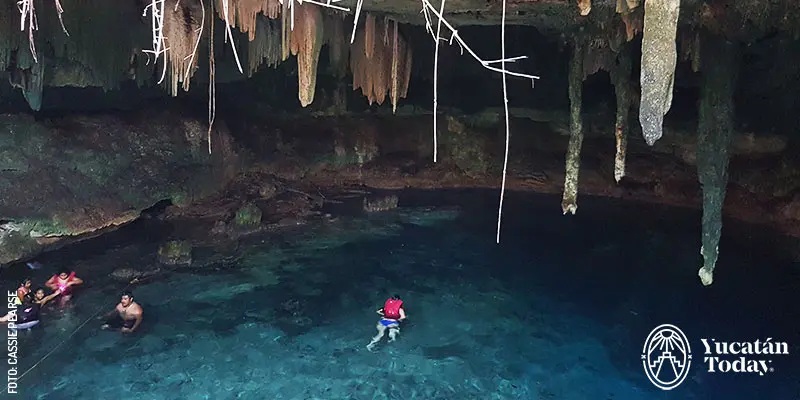
Cenotes X’kekén y Samulá
Localizados en Dzitnup, 7 km al suroeste de Valladolid, un cenote se encuentra a pocos pasos del otro y son de los primeros cenotes mas conocidos y visitados. El cenote K’kekén está dentro de una cámara subterránea donde puedes observar formaciones de estalactitas, aguas de vivo color turquesa e iluminadas por la luz natural que penetra a través de un hueco en la parte central de la bóveda. Cuenta la leyenda que un cochino se cayo por el hueco, de ahi el nombre X’kekén que significa cochino. El agua es poco profunda y es tan limpia y clara que se observan los peces. Tiene una gran plataforma donde puede estar la familia con tranquilidad. El cenote Samulá es un cenote cerrado circular con plataforma y el un hueco que deja pasar la luz y que al centro tiene un área baja donde estaban las raices de un árbol que lamentablemente ya no llega al agua pues la gente se cuelga de sus raices.
Ubicación Cenote X’kekén: https://maps.app.goo.gl/U7m13LGeDFy5kAp69
Ubicación Cenote Samulá: https://maps.app.goo.gl/KDbTobHgDmqQjDZL6
Cenote Lol Ha en Yaxunah
Con la participación de residentes locales, Cenote Lol Ha en Yaxunah recientemente recibió nuevas escaleras y acceso a un área de picnic. Está ubicado entre Chichén Itzá y Yaxcabá, y también hay un Centro Cultural y el sitio arqueológico Yaxunah.
FB: Centro Cultural Comunitario De Yaxunah
Ubicación: https://maps.app.goo.gl/cSoD9aamWREyqeYE9
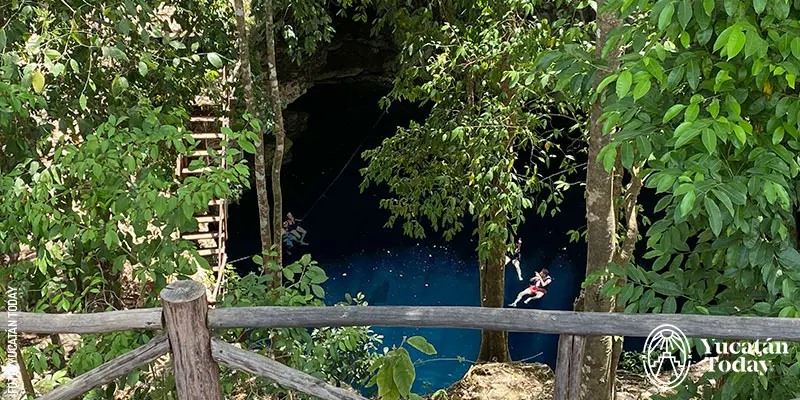
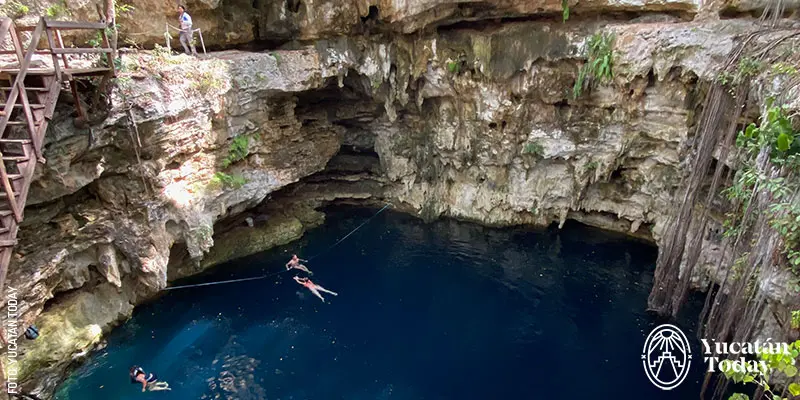
Cenote Maní Chan
Un destino muy familiar donde puedes acampar y visitar 3 cenotes. ya, se puede decir que oficialmente la encontramos. El sitio es lo bastante extenso como para mantener ocupados a los pequeños, pero lo suficientemente reducido para no perderlos de vista. Hay un baño en la cima de una colina, un espacio para hacer una fogata y una cocina que ofrece comida. El cenote Maní-Chan es un cenote muy familiar y facil de explorar. Hay dos cenotes más grandes a los que puedes llegar caminando por un sendero natural, o manejando por un carrito guiado. El cenote Clotilde es un cenote semiabierto y el cenote Caliskutz está completamente encapsulado por piedra. El sitio ofrece chalecos salvavidas.
Cel. 999 420 4852
Ubicación: https://maps.app.goo.gl/K5WcC1p5CPFUpfPu6
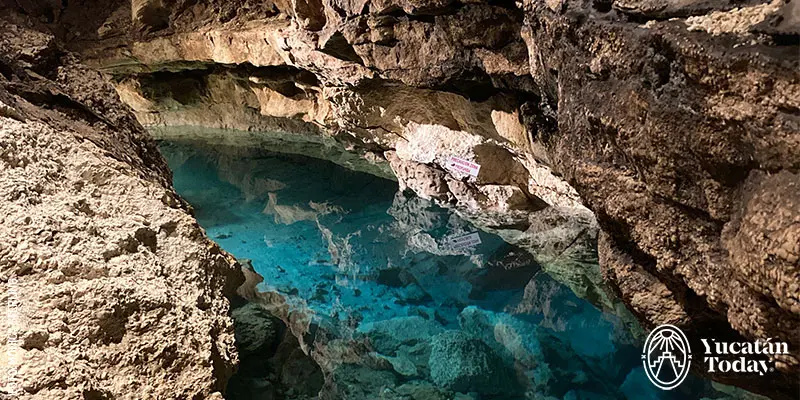
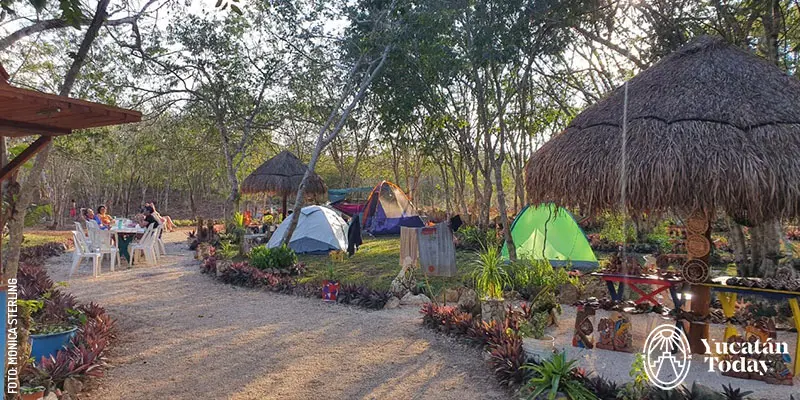
Cenote Palomitas y Cenote Agua Dulce
En el poblado de Yalcobá, a solo 5 km del cenote Sac Aua, se encuentra un parador operado por una cooperativa donde puedes visitar el cenote Palomitas y el cenote Agua Dulce. Los dos tienen plataforma y son de facil acceso. El principal (y el más bonito) es Agua Dulce con sus aguas transparentes y un techo en el que se continúan formando estalactitas, al centro tiene una plataforma artificial de donde puedes saltar agua desde bastante alto. Cuenta con estacionamiento, regaderas y restaurante.
Ubicación: https://maps.app.goo.gl/aYGH3AUKb9gsaTYB8
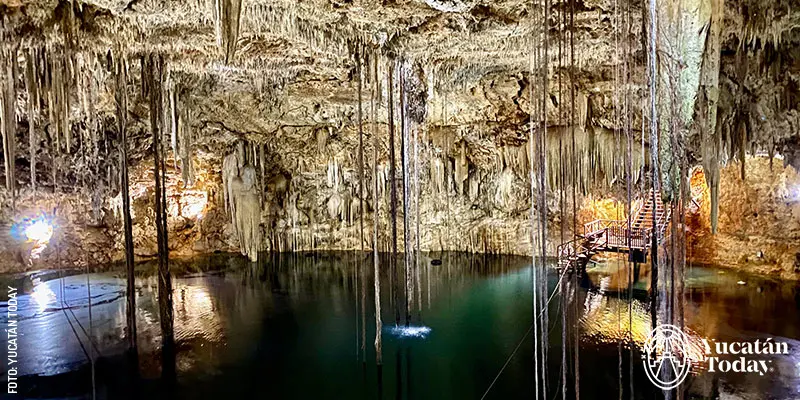
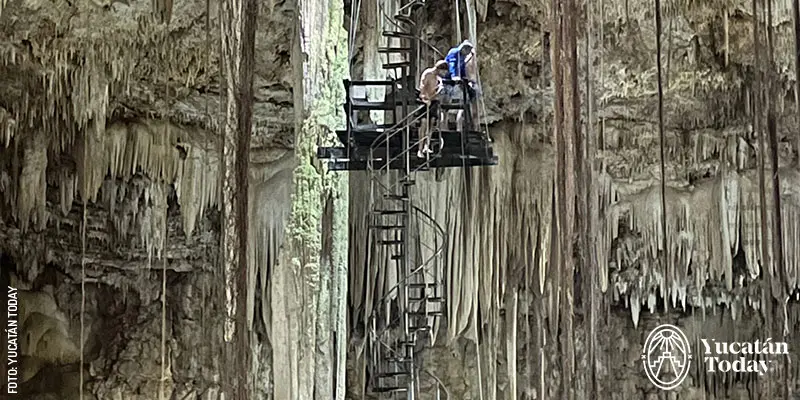
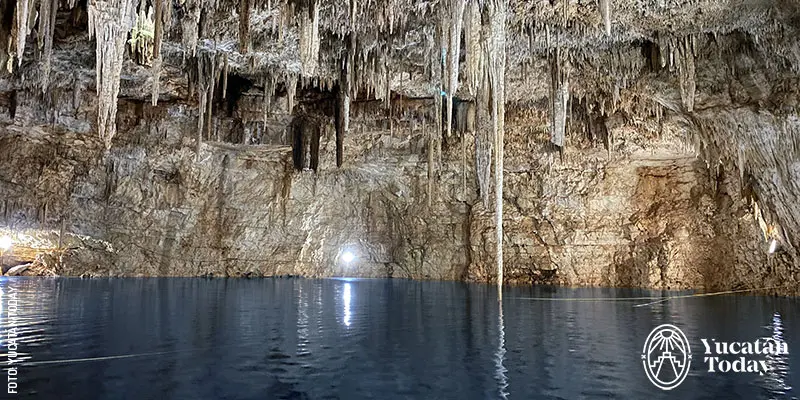
Cenotes en Pixyah: Nah Yah, Suhem y Noh Mozón
En el municipio de Tecoh puedes visitar el famoso trío de cenotes: Nah Yah, Suhem y Noh Mozón, localizados en la localidad de Pixyah. Cuando llegas al poblado los niños se te acercan para mostrarte el camino blanco hasta el primero que es Nah Ya, esta muy cerca a 1 km y tiene un costo aproximado de $80 pesos por persona. Este cenote tiene una plataforma pequeña en la parte de abajo y es de los favoritos para practicar apnea y buceo. A tan solo 500 metros encontraras el segundo cenote, Suhem, un cenote abierto y con plataforma en la parte de abajo y tirolesa para tu diversión. Cuentan con área de camping. El tercer cenote Noh Mozón esta mas retirado, considera unos 20 minutos o 4.4 km en por un sendero en bastante mal estado dentro de la selva yucateca, no aptos para automóviles bajos. Noh Mozón es un cenote semi abierto muy grande y con plataforma en la parte de abajo, conocido por ser sede para el buceo. Lamentablemente todas las raices de los árboles ya no llegan al agua pues la gente se cuelga de ellas.
Tel. 999 749 2458
FB: Cenote Suhem Pixyah
Ubicación Cenote Nah Yah: https://maps.app.goo.gl/1mQZ1FGoYYJyoSmE8
Ubicación Cenote Suhem: https://maps.app.goo.gl/TwAQE7fL2rWfyeyT9
Ubicación Cenote Noh Mozón: https://maps.app.goo.gl/XqRz44b1NRhuXkgv6
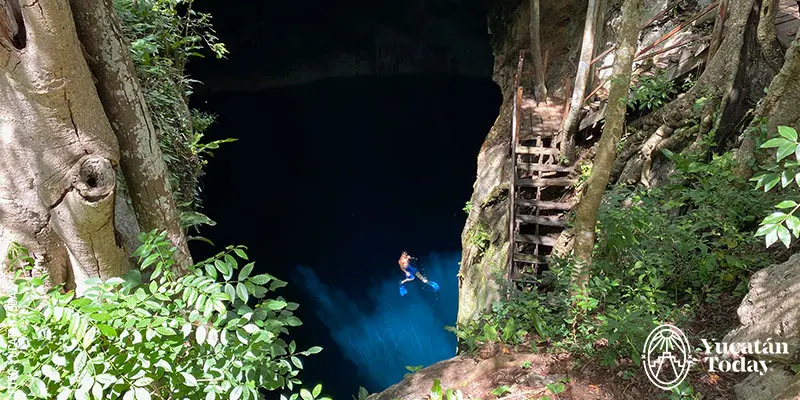
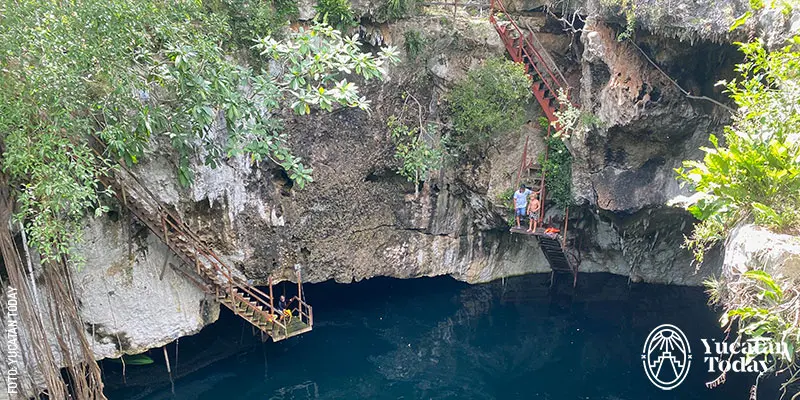
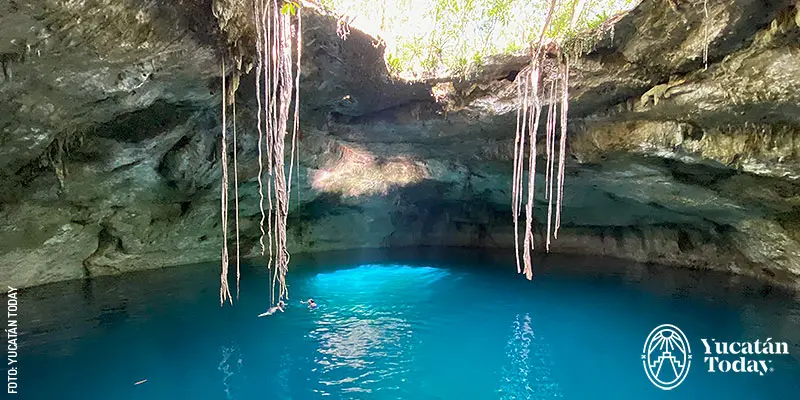
Cenote Pueblo Fantasma
Ubicado a unos 38 km o 40 minutos al oriente de Valladolid, el cenote Pueblo Fantasma es de tipo caverna, con una bóveda enorme y una estructura de la caverna colapsó hace miles de años, formando una enorme mole de estalactitas en el centro. Justo afuera del cenote hay un área de hamacas bajo los árboles. Cuenta con servicio de restaurante donde puedes comer la comida del dia o reservar que te cocinen en pib (enterrado). También bajo reserva puedes pedir una ceremonia maya.
Cel. 985 146 2166
Ubicación: https://maps.app.goo.gl/JZ7qmb3KJ9XSSNjj8
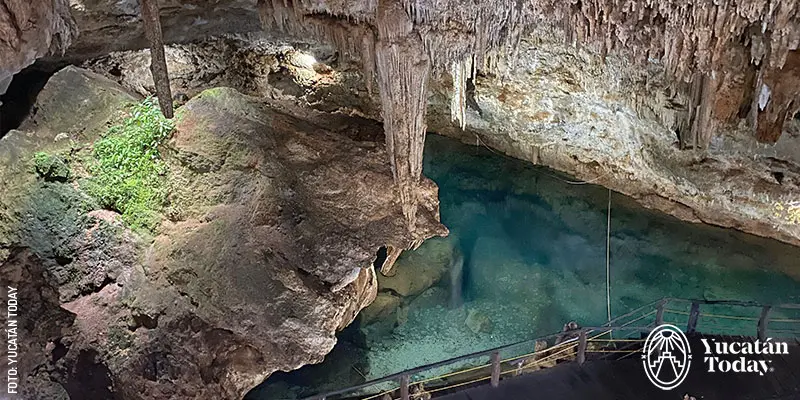
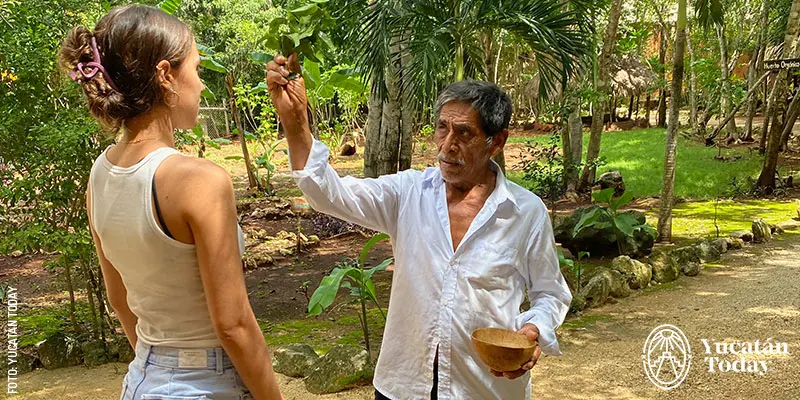
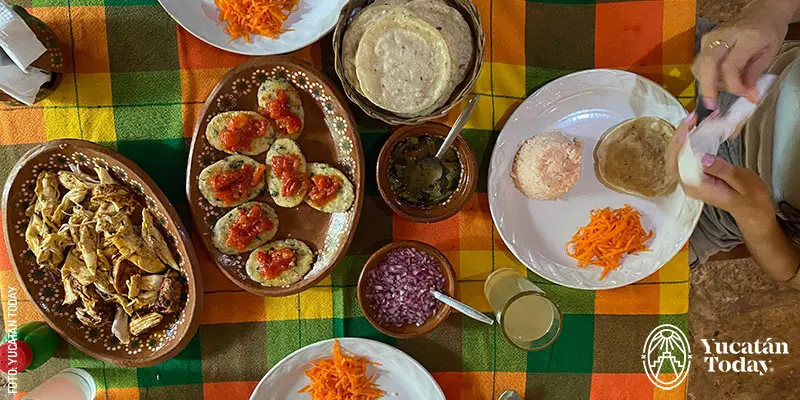
Cenote Sac Aua
El cenote Sac Aua se ubica cerca (a 29 km) de Valladolid, en la comisaría de Dzalbay, y aún más del sitio arqueológico de Ek Balam. Su distintivo es la impresionante isla en su interior. Además del atractivo relativo al cenote y la isla al centro, Sac Aua tiene opciones de rappel, senderismo, una gruta con vestigios y un restaurante con platillos típicos de Yucatán. Además, cuenta con regaderas, baños y estacionamiento.
Cel. 985 113 5112
FB: Cenote Sac Aua
Ubicación: https://maps.app.goo.gl/SojwBmW2AKLj5un76
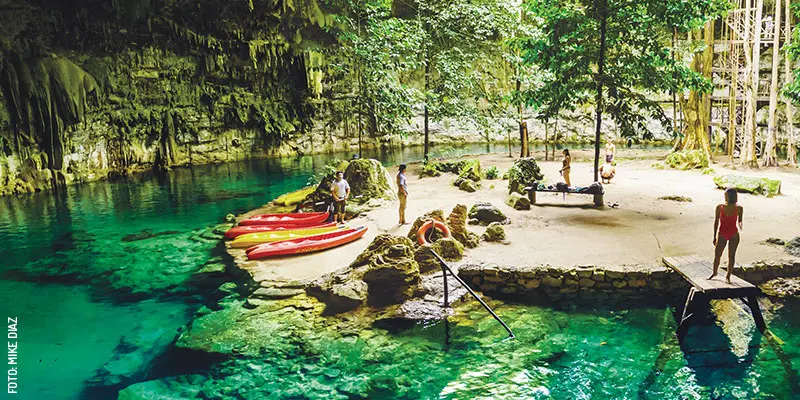
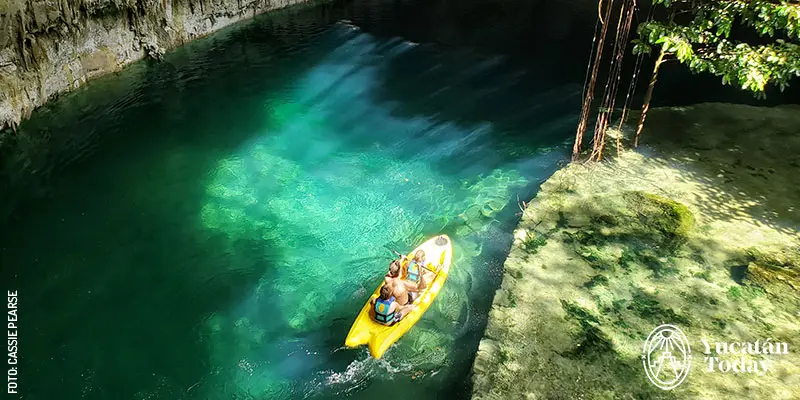
Cenote San Ignacio
A 40 minutos de Mérida en la carretera a Campeche, en el poblado de Chocholá se encuentra este cenote con condiciones muy seguras e ideal para nadar de día o de noche en sus aguas transparentes de color azul turquesa. Se encuentra en el interior de una gruta con iluminación artificial y música ambiental. La bóveda es de unos ocho metros de altura y tiene formaciones de estalactitas y se puede disfrutar de especies endémicas de Yucatán. Las instalaciones del cenote cuentan con áreas verdes, restaurante, palapas, vestidores, baños, bungalows para pasar la noche, etc. Abierto los 365 días del año.
www.cenotesanignacio.com
Ubicación: https://maps.app.goo.gl/s6ZhGuMxrR58X6hPA
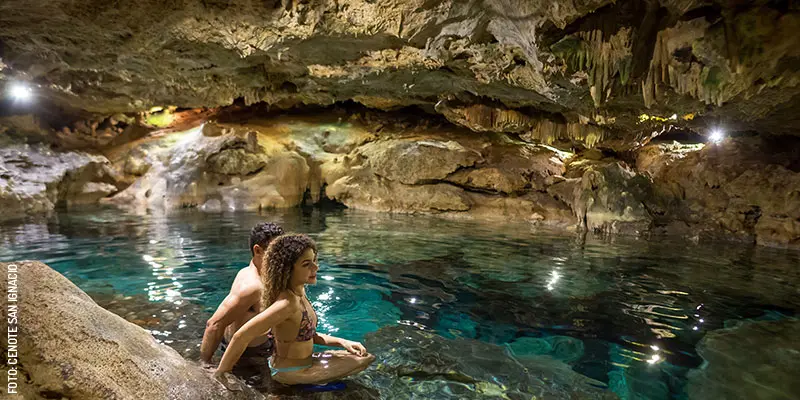
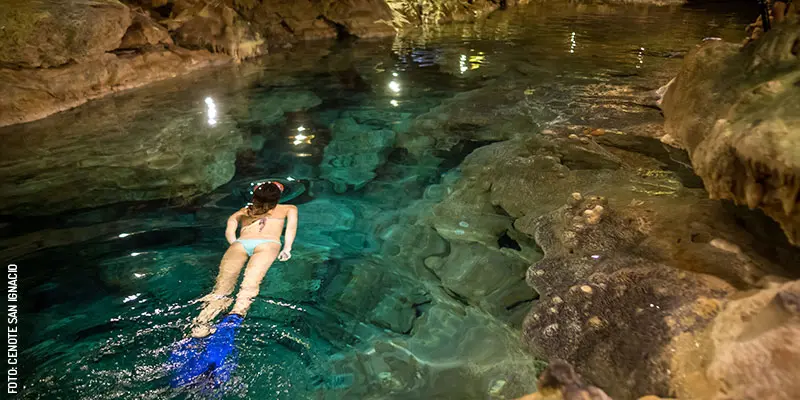
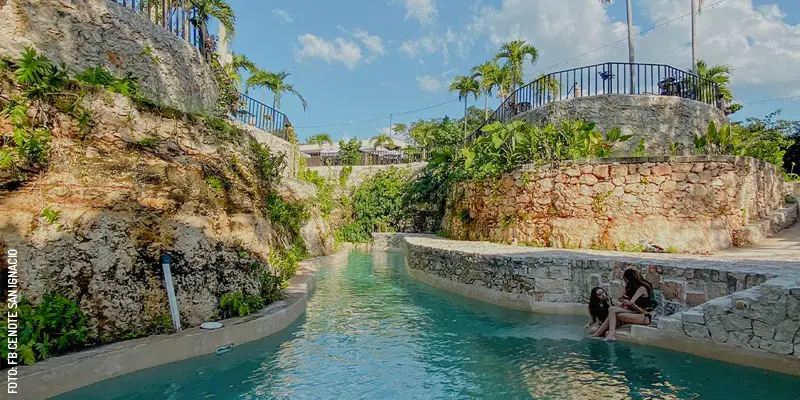
Los 7 Cenotes
Los 7 Cenotes se encuentran en una reserva privada de más de 250 hectáreas. La inmensa riqueza del lugar ofrece el exclusivo y seguro encuentro entre la naturaleza y el mundo místico maya. Está ubicado en el Municipio de Sotuta, a 80 km de Mérida. Deberás reservar para poder tener acceso a esta reserva.
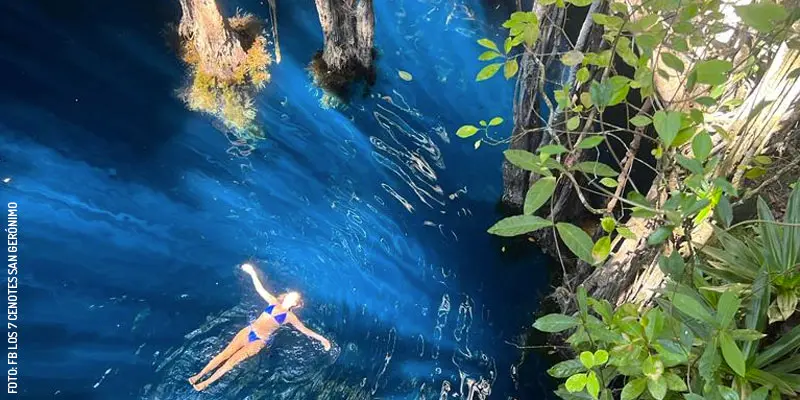
Cenote Yokdzonot
Ubicado en el poblado de Yokdzonot a tan sólo 10 minutos de Chichén Itzá. Nadar en el cenote abierto de Yokdzonot es una experiencia mágica, los pequeños peces a tu alrededor, los pájaros en los árboles entonando sus canciones, los «tulixes» (libelulas) volando sobre la superficie del agua fresca y limpia. Tiene área de camping.
Ubicación: https://maps.app.goo.gl/VCw6EivuevY2MinC9
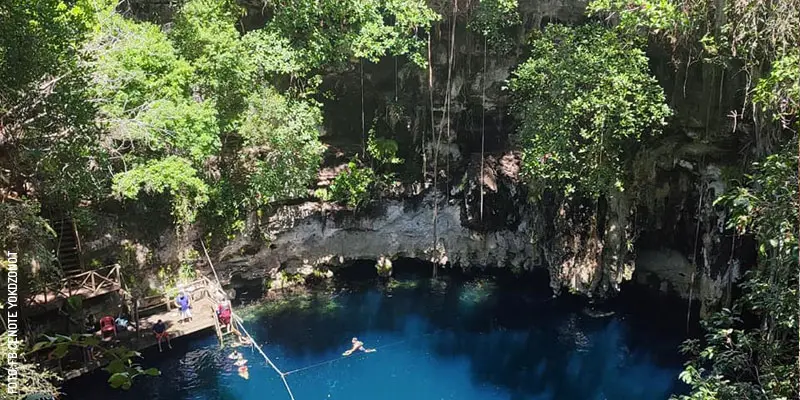
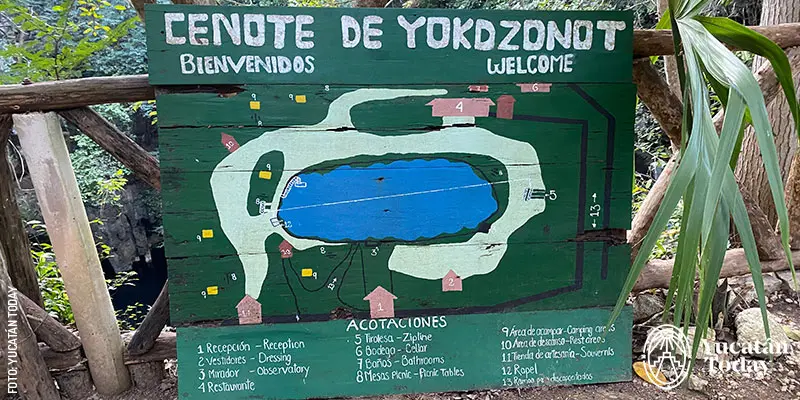
Cenote Xcanahaltún
Ubicado en Yalcobá, cerca de los cenotes Palomitas, Agua Dulce y Sac Aua, encontrarás el majestuoso cenote Xcanahaltún. Operado por una coperativa, en este cenote también puedes admirar los efectos de la luz sobre las formaciones de piedra que sobresalen del techo y del cenote mismo. Al no ser tan visitado, puedes pasar horas ahí conviviendo con los peces que se te acercarán mientras nadas. Cuenta con regaderas y estacionamiento y también puedes practicar rappel y kayak.
Cel. 985 102 4651
Ubicación: https://maps.app.goo.gl/eFzKBVpWFcir7hy9A
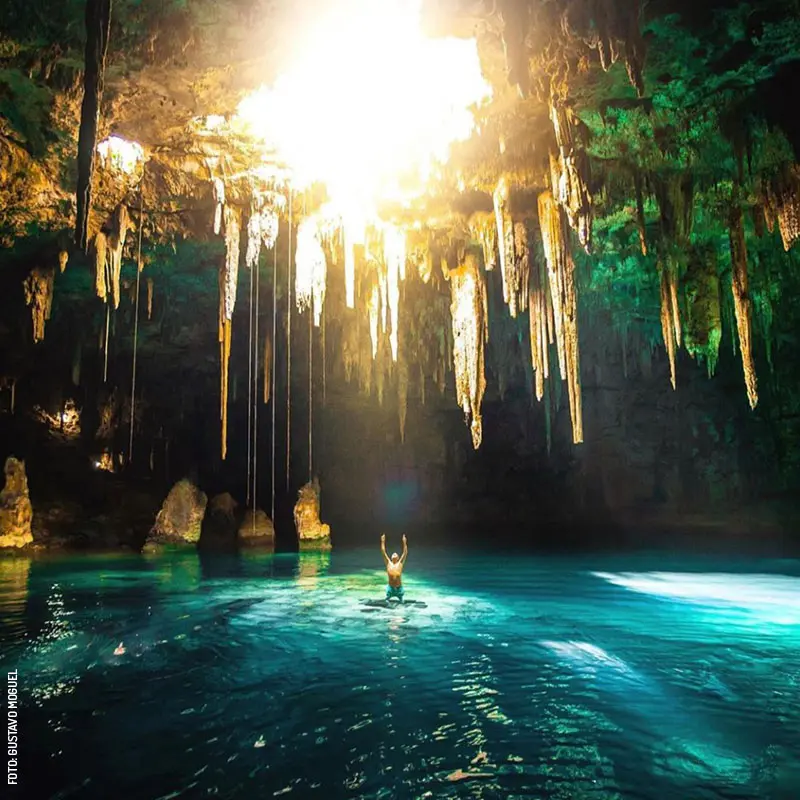
Cenote X’Canché
Este hermoso cenote es la pareja perfecta para una visita a la Zona Arqueológica de Ek Balam, ya que su entrada está en el mismo parador turístico. Operado por una cooperativa el cenote X’Canché es de gran tamaño y profundidad. La misma cooperativa ofrece platillos tradicionales en su restaurante a unos pasos del cenote.
Ubicación: https://maps.app.goo.gl/nfADPGVztHj9rvcB7
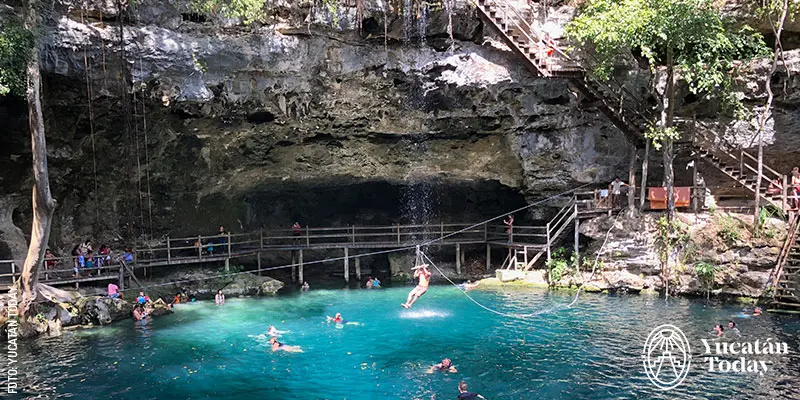
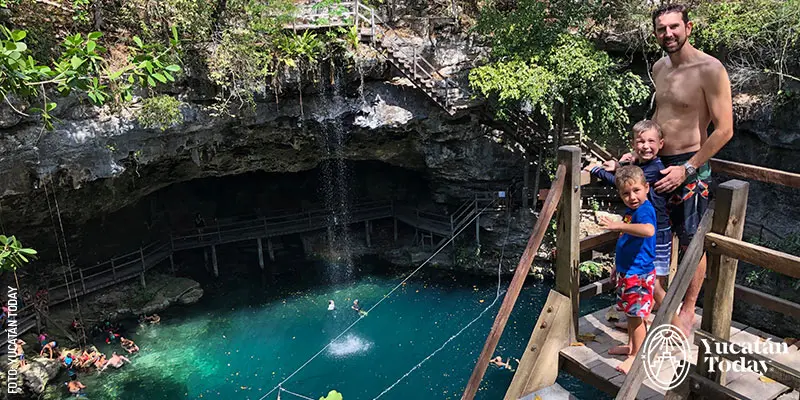
Cenote Xlacah
Ubicado en la zona arqueológica de Dzibilchaltún, es uno de los más cercanos a la ciudad de Mérida. Su nombre significa «pueblo antiguo». Es un cenote abierto y el fondo se inclina en ángulo agudo continuando a una distancia desconocida. Ya no es posible ingresar al agua, pero sigue siendo digno de visitar. Está abierto diariamente en el mismo horario que el sitio arqueológico, y con las mismas tarifas.
Cel. 985 116 6296
Ubicación: https://maps.app.goo.gl/7ys3yghbi66qEfv36
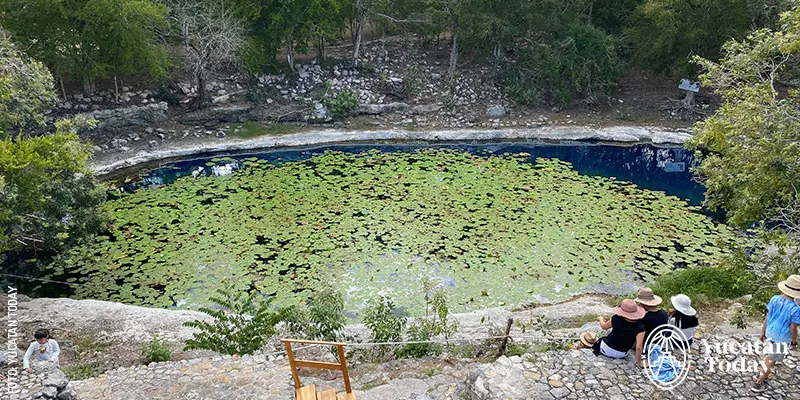
Cenote X’Pakay
Ubicado justo en las afueras de Tekit y operado por una cooperativa local, el cenote X’Pakay tiene más de 40 metros de profundidad y desde su interior podrás apreciar cómo los rayos del sol le dan una vista impresionante a las aguas cristalinas y azules. La cooperativa cuenta con hospedaje.
Ubicación: https://maps.app.goo.gl/aiHxjC6CcbiAq88z5
Cenote Zací
Ubicado en el corazón de la ciudad de Valladolid, es de los más populares para bañarse por sus aguas cristalinas y refrescante color turquesa, en las que se encuentra una rara especie de peces negros y sin ojos denominados «lub». Puedes ver formaciones de estalactitas y estalagmitas que cubren la tercera parte del cenote.
Ubicación: https://maps.app.goo.gl/kSZucDVcQBcgh19F7
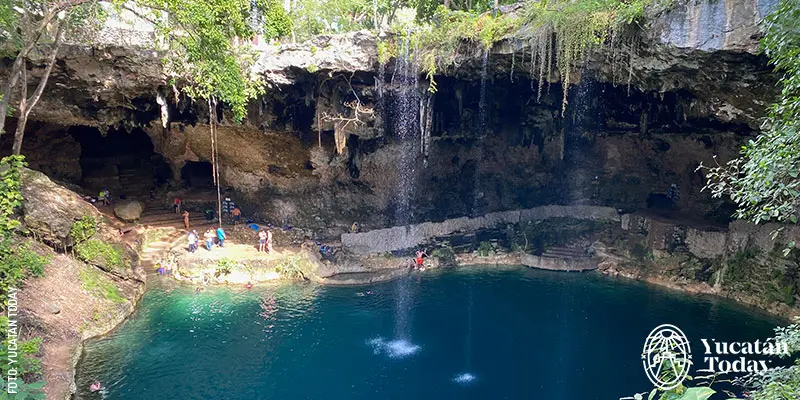
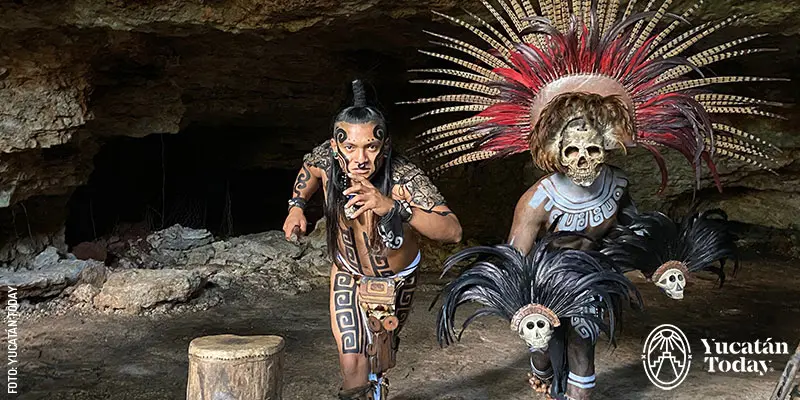
Cenote Zacil Tunich
El cenote-caverna Zazil Tunich o “piedra brillante” ubicado a 25 km de Valladolid y a 20 km de Ek Balam es una experiencia diferente y auténtica que combina misticismo e impresionantes formaciones de más de 80 estalactitas y estalagmitas de tamaño monumental. El recorrido de aproximadamente una hora con 15 minutos bajo 20 metros de tierra es de fácil acceso para niños y adultos mayores. Al llegar a la plataforma principal se realiza una ceremonia maya con un chamán de la región, que usa humo y agua para limpiar y purificar, dejándote listo para disfrutar de las aguas del cenote sagrado. Tienen diferentes horarios y versiones de recorrido. También se puede celebrar una pedida de matrimonio, un aniversario o un evento especial de parejas con una cena romántica exclusiva
Cel. 985 808 5827
Ubicación:https://maps.app.goo.gl/JCmgHNgQBgAU52nb6
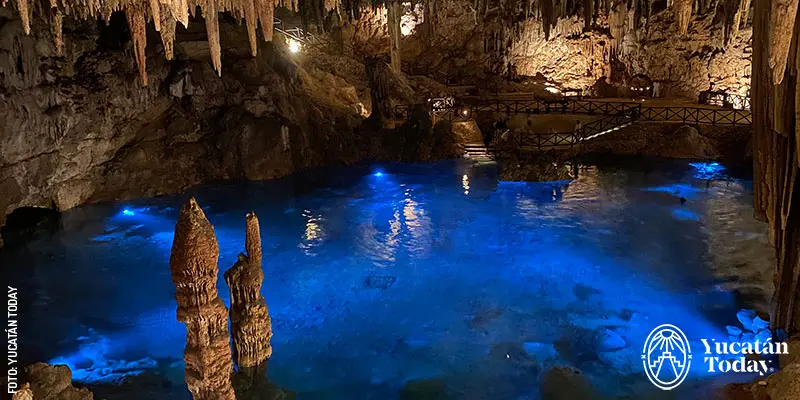
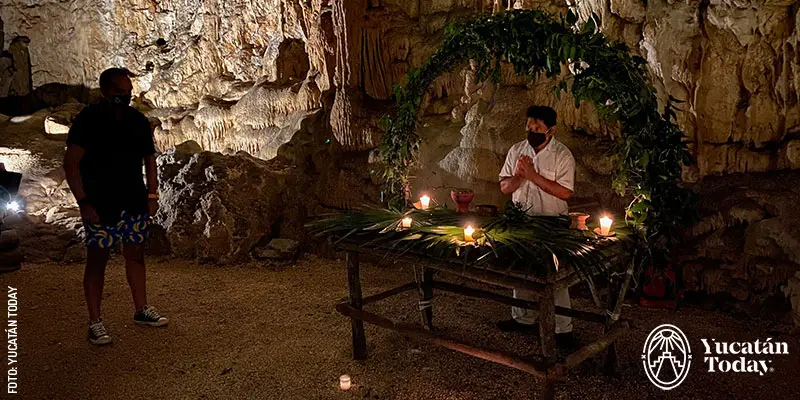
Artículos relacionados
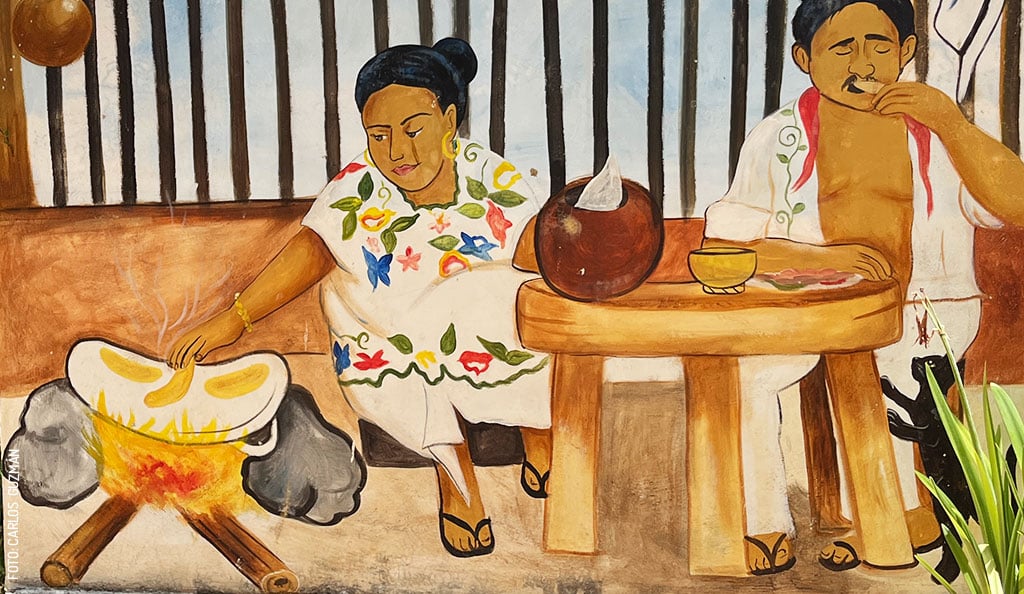
Memoria que perdura en la sazón: Las cocineras tradicionales
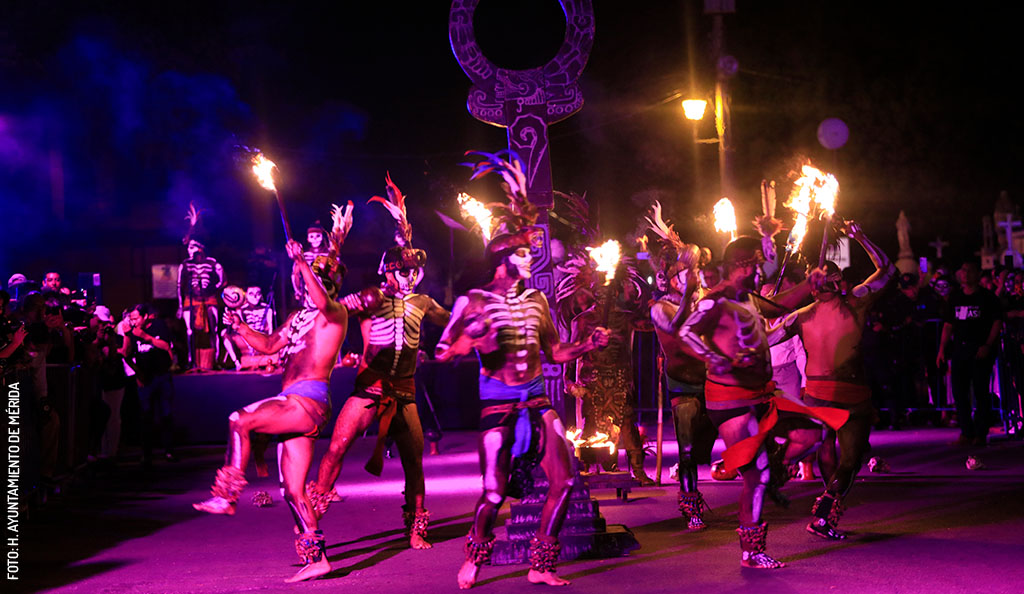
Juegos de azar entre los antiguos mayas: Patolli, Pitz y Bul
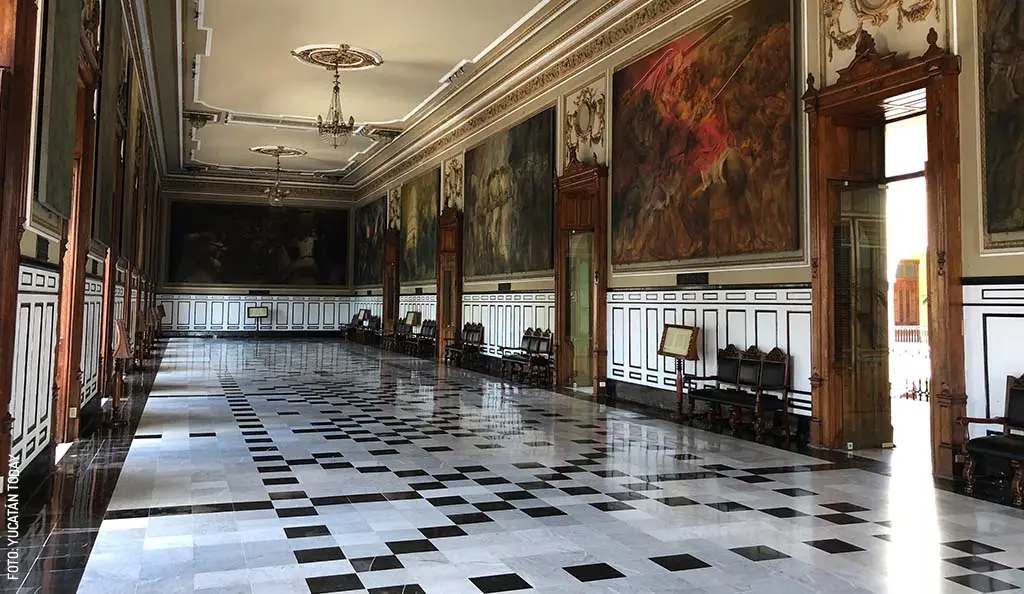
Los cuadros del Palacio de Gobierno: fragmentos de un alma
Artículos relacionados
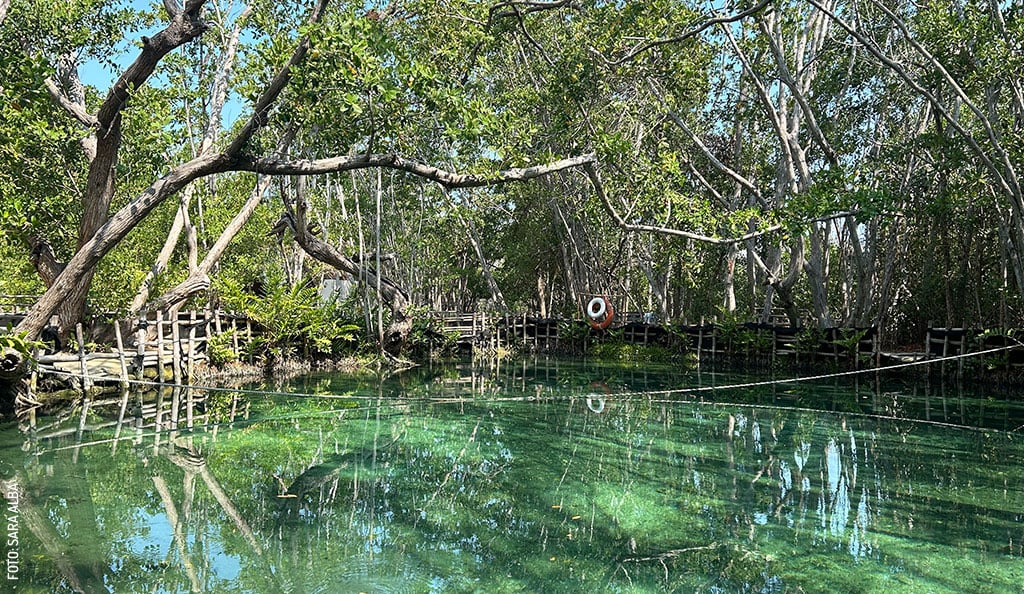
Una escapada de verano a El Corchito
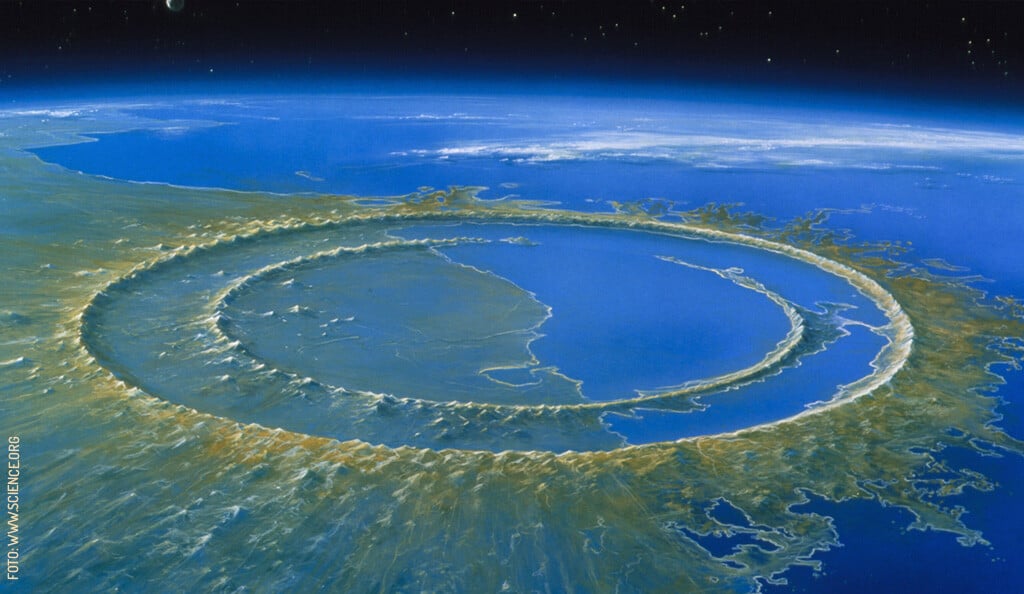
El cráter de Chicxulub




